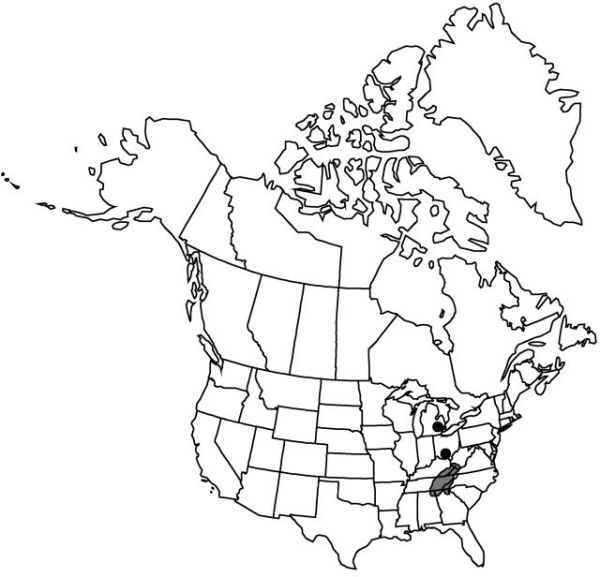Prosartes maculata
Amer. J. Sci. Arts 47: 201. 1844.
Plants 3–8 dm, glabrescent with age. Stems sparingly branched. Leaves 4–15 × 2–4 cm; blade ovate to lanceolate, rounded to subcordate basally, abaxial surface veins and margins pubescent, hairs scattered, flattened, apex sharply acuminate, with (3–) 5 prominent veins. Flowers 1–3 (–4); perianth broadly campanulate; tepals creamy white spotted with purple, ovatelanceolate, abruptly narrowly clawed basally, 15–25 mm, apex acuminate; stamens exserted; filaments filiform, 15–20 mm; anthers 3–6 mm; ovary obconic to obpyriform, becoming 3-lobed after anthesis, papillose with ascending, stellate glandular-hairs, ovules 2–4 per locule, horizontal; style 1.4–2.3 cm, glabrous; stigma 3-lobed. Berries pale straw-colored, 3-lobed, 6–10-seeded, 10–15 mm, papillose with stellate hairs arising from papillae; lobes subglobose. Seeds 4 mm. 2n = 12.
Phenology: Flowering early–late spring.
Habitat: Rich, moist, deciduous woods, slopes and ravines
Elevation: 100–800 m
Distribution

Ala., Ga., Ky., Mich., N.C., Ohio, Tenn., Va., W.Va.
Discussion
This rare old-forest obligate is readily distinguished by its purple-spotted, clawed tepals and its three-lobed, straw-colored, hairy-papillose fruit (R. G. Johnson 1968).
Selected References
None.
Lower Taxa
"broad" is not a number."thicker" is not a number.